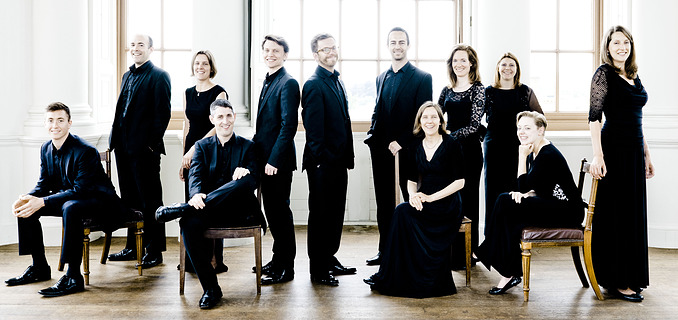Stile Antico's account of the Tallis Mass is masterful, displaying this small director-less choir's sure sense of this expansive work's architecture. Tuning and ensemble are perfect throughout, as are the group's control of dynamics and the balance between the upper and only sightly less prominent lower voices. Equally successful are the choir's by turns ringing and tender performances of the Byrd (particularly the very brief, gentle 'Ave Maria') and the other, stylistcally very different works in the programme, all alternatim settings: the older John Taverner's All Saints Day repsonsory Audivi vocem de caelo, whose narrow vocal compass suggests an intended performance by a quartet of trebles; the younger John Sheppard's typically exuberant, wide-ranging, harmoncally daring and structurally complex Verbum caro; and the even more junior Robert White's glorious, extremely tonally varied setting of the Magnificat. The cohesion of Stile Antico in its rendition of the Sheppard, whose eccentric melodic lines and harmonic turns make this a difficult work to perform, is truly impressive. Yet the most arresting work is the one opening the recital, Tallis's lengthy Videte miraculum, a sublime masterpiece whose gentle repeated rhythms and recurring motifs Stile Antico renders with just a hint of melancholy tinting its dominant mood of serene wonder at the mystery of the Incarnation.
As with Stile Antico's previous discs, the bass Matthew O'Donovan provides a description of each work's prinicpal musical features sensibly pitched at an audience without elevated musicological qualifications, which considerably enhances enjoyment of the programme. Also in conformity with Stile Antico's other recordings, this is a so-called 'hybrid' Super Audio Compact Disc: one of its two layers contains a conventional CD version of the recording and a second layer that can be read only by a player designed for SACD, containing both stereo and multi-channel high-definition versions. On my stereo SACD player, fine individual details of the choir's unanimously attractive voices are revealed that are inaudible (or 'invisible') when the disc is played on a conventional CD player. There is, as well, a more vivid sense of the placement of the singers and the space of the recording venue around them: All Hallows Church, Gospel Oak in London. For those who have not invested in an SACD player, the sound quality through a conventional CD player is still exemplary. In short, another triumph for Stile Antico and Harmonia Mundi.


 Back to List
Back to List